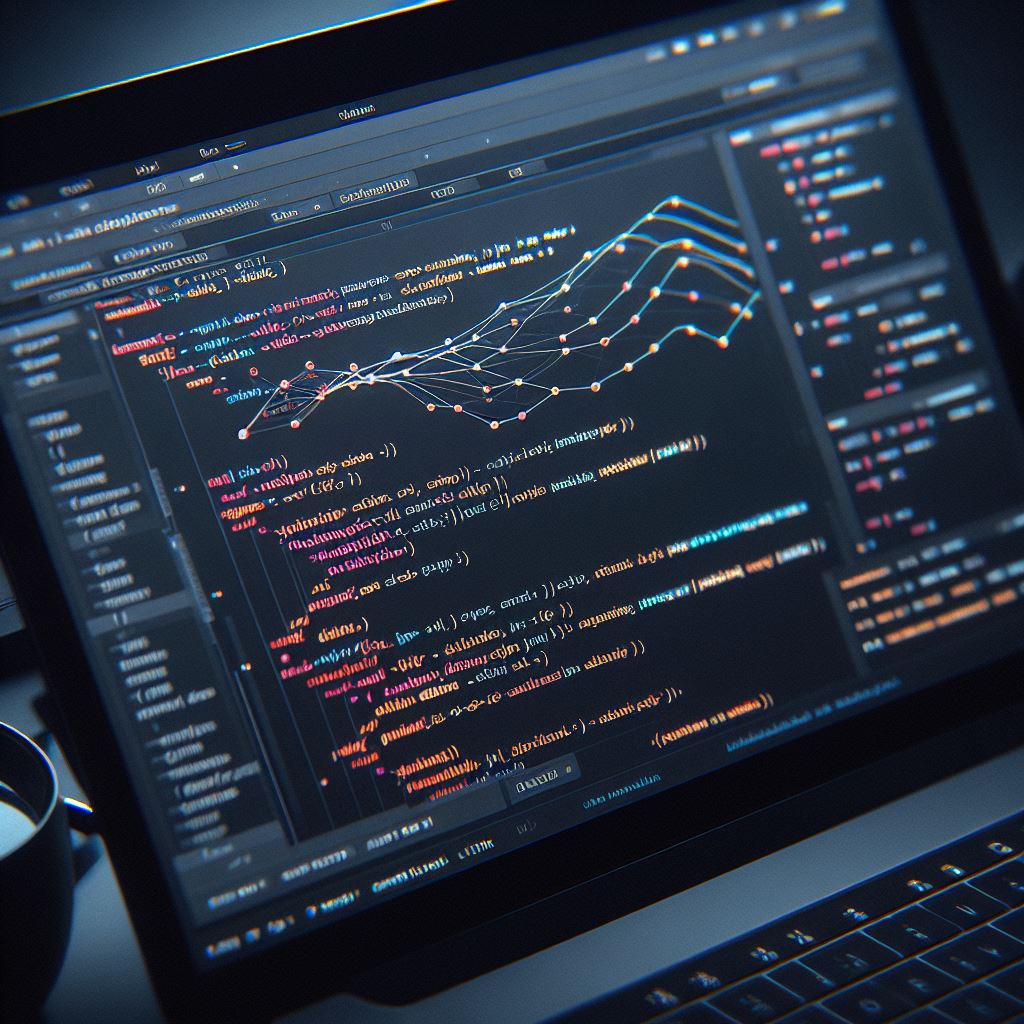
Deploying deep learning models is more than just throwing code onto a server. It involves scalability, reliability, and performance. Keras, known for its simplicity and ease of use, offers a seamless transition from development to production.
Choosing the Right Deployment Strategy
Choosing the right deployment strategy for your Keras model is an important decision on your path to production success. Flask, FastAPI, and TensorFlow Serving emerge as popular and reliable choices.
Flask and FastAPI stand out for their prowess in crafting RESTful APIs. Their simplicity and flexibility make them excellent choices for deploying Keras models in scenarios where interaction occurs through HTTP requests. These frameworks seamlessly integrate with your model, allowing it to be accessed and utilized by other applications or services.
On the other hand, TensorFlow Serving specializes in serving TensorFlow models efficiently. If your project revolves around TensorFlow and demands high-performance serving, this dedicated option might be the perfect fit. TensorFlow Serving streamlines the process, ensuring your Keras model is served with optimal speed and resource efficiency.
When making this critical decision, it’s essential to align your choice with the unique requirements of your project and your team’s expertise. Consider factors such as ease of integration, scalability, and the nature of interactions your model will have with the wider ecosystem.
The deployment strategy you opt for sets the stage for your Keras model’s performance and accessibility in the production environment. Take the time to evaluate the strengths of Flask, FastAPI, and TensorFlow Serving, and make a decision that propels your deep learning masterpiece into the limelight of real-world applications.
Containerization with Docker
Docker emerges as an indispensable ally for deploying your Keras models. Containerization, the core concept behind Docker, brings a host of benefits that can streamline the deployment process and ensure your model’s seamless performance across various environments.
Docker’s primary strength lies in its ability to encapsulate your entire Keras model and its dependencies within a container. This encapsulation ensures consistency, eliminating the notorious “it works on my machine” dilemma that often plagues development teams. With Docker, what you see in your development environment is precisely what you get in production, promoting a hassle-free transition from testing to deployment.
The transportability enabled by Docker is a game-changer. Your Keras model, packaged neatly within a container, becomes easily portable across different systems and cloud platforms. This simplifies the deployment process and allows for effortless scaling as demand for your model grows.
Beyond consistency and portability, Docker excels in dependency management. No more wrestling with compatibility issues or spending hours configuring environments. Docker containers encapsulate all necessary dependencies, making your Keras model self-contained and ready to run without a hitch.
Optimizing Model Inference
When it comes to deploying your Keras model in a production environment, the spotlight shifts to optimizing model inference for peak performance. The ultimate goal? Achieving lightning-fast results that cater to the demands of real-world applications. Here are some key strategies to make your model an inferential powerhouse.
One effective approach is leveraging TensorFlow Serving, a dedicated tool that specializes in efficient model serving. By integrating your Keras model with TensorFlow Serving, you tap into its optimized architecture, ensuring swift and resource-efficient inference.
Another powerful technique is model quantization. This involves reducing the size of your model, which in turn leads to quicker load times and lower resource consumption. Smaller models are especially beneficial for real-time applications, where speed and efficiency are paramount. Techniques like quantizing weights and activations help strike a balance between model size and performance, making your Keras model leaner without compromising accuracy.
In the quest for optimized model inference, it’s essential to weigh the trade-offs between model size and performance. While TensorFlow Serving streamlines the serving process, model quantization offers a tailored solution for minimizing the footprint of your Keras model.
Ultimately, the key is finding the right balance that aligns with the specific requirements of your production environment. Whether you opt for TensorFlow Serving or delve into model quantization, the goal remains the same: to unlock the full potential of your Keras model, delivering speedy and resource-efficient inferences that set the stage for success in the real-world applications landscape.
Scaling with Kubernetes
As your Keras model takes center stage and gains popularity, the need for scalability becomes non-negotiable. Enter Kubernetes, the orchestration powerhouse of the cloud era, offering a seamless solution to ensure your deep learning models can gracefully handle the demands of an ever-expanding user base.
Kubernetes simplifies the scaling process by automating deployment, scaling, and overall management of your Keras models. This orchestration tool, often referred to as K8s, excels in distributing workloads across clusters of machines, ensuring optimal utilization of resources and maintaining consistent performance even during peak usage.
One of the key advantages of Kubernetes is its ability to scale horizontally and vertically. Horizontal scaling involves adding more instances of your Keras model to distribute the load, while vertical scaling involves increasing the resources allocated to a specific instance. This flexibility allows you to tailor the scaling strategy to match the unique demands of your application.
Kubernetes facilitates rolling updates and rollback mechanisms, enabling seamless updates of your Keras models without downtime. This is crucial for maintaining a responsive and uninterrupted service, especially when your model undergoes enhancements or bug fixes.
Kubernetes emerges as an ideal choice for ensuring that your Keras models not only cope with increased demand but do so with efficiency and reliability. By leveraging the automation and scalability features of Kubernetes, you pave the way for a smooth and resilient performance that aligns perfectly with the skyrocketing success of your deep learning masterpiece.
Monitoring and Logging
As your Keras model takes flight into the production environment, maintaining a vigilant watch over its performance becomes paramount. Implementing a robust monitoring and logging strategy is the compass that ensures you stay on course, enabling you to track key metrics and swiftly address any issues that may arise.
Effective monitoring involves the continuous observation of critical indicators, such as response times, error rates, and resource utilization. This proactive approach allows you to identify potential bottlenecks or anomalies, ensuring that your Keras model operates optimally. By integrating tools like Prometheus and Grafana, you gain real-time insights into the health of your model, empowering you to make data-driven decisions.
Prometheus, a leading open-source monitoring and alerting toolkit, excels in collecting and storing time-series data. It provides a comprehensive view of your Keras model’s performance metrics, enabling you to set up alerts and notifications for any deviations from the expected behavior.
Complementing Prometheus, Grafana offers a user-friendly platform for visualizing and analyzing the collected data. With customizable dashboards, Grafana transforms complex metrics into easily interpretable graphs, aiding in the rapid identification of performance trends and potential issues.
Together, Prometheus and Grafana create a dynamic duo for monitoring the health and performance of your Keras model in real time. This proactive monitoring approach safeguards against potential disruptions and allows you to fine-tune and optimize your model based on actionable insights, ensuring a smooth and reliable user experience in production.
Ensuring Security

Safeguarding your model involves implementing a comprehensive security strategy that encompasses various layers of defense, ensuring the protection of both your model and the sensitive data it handles.
First and foremost, secure your Keras model by fortifying its APIs. Restrict access to authorized entities, employ robust authentication mechanisms, and validate input thoroughly to mitigate the risk of potential exploits. By setting up proper access controls, you create a strong perimeter that shields your model from unauthorized access.
Implementing rigorous authentication mechanisms adds an extra layer of defense. Utilize techniques like API keys, OAuth tokens, or JWT (JSON Web Tokens) to authenticate users and systems interacting with your Keras model. This ensures that only legitimate entities can access and make use of the model’s capabilities.
Whether it’s data in transit or at rest, employing encryption algorithms ensures that even if intercepted, the information remains indecipherable to unauthorized entities. Secure communication channels using protocols like HTTPS, and encrypt stored data to prevent potential breaches.
Regularly updating dependencies is a proactive measure to stay ahead of potential security threats. Many vulnerabilities arise from outdated libraries or frameworks, so keeping your dependencies up to date is akin to fortifying the walls of your security fortress. Adopt a systematic approach to patch vulnerabilities promptly and maintain a vigilant stance against emerging threats.
A robust security strategy instills confidence in users and stakeholders. By integrating secure API practices, authentication measures, encryption protocols, and a proactive approach to dependency management, you fortify your model against potential threats, ensuring its resilience in the face of evolving cybersecurity challenges.
Continuous Integration and Deployment (CI/CD)
Continuous Integration and Continuous Deployment (CI/CD) emerge as the linchpin for maintaining order in the chaos. These practices, often likened to a well-oiled machine, streamline processes, automate testing, and ensure a seamless journey from development to production.
CI/CD pipelines serve as the backbone of sanity in the face of rapid evolution. Embracing CI/CD means automating crucial steps in your development lifecycle, from testing and validation to deployment.
Automating testing is a fundamental aspect of CI/CD. Through automated testing, you can quickly validate your Keras models against predefined criteria, catching bugs and issues early in the development process.
Model validation is another step in the CI/CD pipeline. Ensure that your Keras models meet performance benchmarks, accuracy thresholds, and other predetermined criteria before advancing to the deployment stage. This ensures that only validated and optimized models make their way into the production environment.
The deployment process itself becomes a breeze with CI/CD. Automation ensures that the latest version of your Keras model is seamlessly pushed into production, reducing downtime and minimizing the risk of deployment-related issues. Tools like Jenkins and GitLab CI act as loyal allies in setting up and managing these automated pipelines.